On February 1, 2003 the Space Shuttle Columbia was returning home along with its seven crew members. They had successfully completed a 15 day scientific mission packed with research activities. During reentry, just 16 minutes prior to their anticipated landing at Kennedy Space Center, Columbia tore apart, falling to pieces over Texas. All of the astronauts died before they hit the ground. Every year they are honored on the last Thursday in January, NASA’s Remembrance Day.
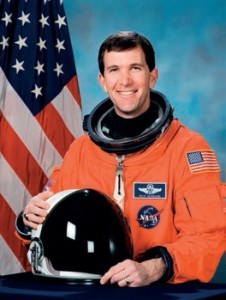 Rick Douglas Husband, Commander
Rick Douglas Husband, Commander
A mechanical engineer by education, Rick joined the Air Force and became a test pilot before being selected as an astronaut candidate in 1994. After completing his initial training, Rick served as Chief of Safety for the Astronaut Office. He first flew to space aboard Discovery STS-96 in May 1999 , the first Shuttle mission to dock with the International Space Station. His second space mission was STS-107. For Rick, being an astronaut was a lifelong dream, and he loved every minute of it.
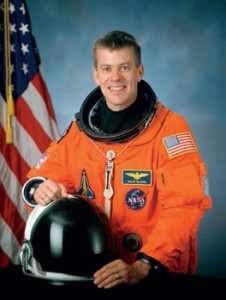 William “Willie” Cameron McCool, Pilot
William “Willie” Cameron McCool, Pilot
A Navy man before joining NASA, Willie attended the Naval Academy, accumulating degrees in applied science, computer science, and aeronautical engineering, even as he deployed as a Navy pilot, and later, test pilot. He was selected as an astronaut in 1996. Unlike many astronauts, Willie loved exercising in space. “I’ll tell you, there’s nothing better than listening to a good album and looking out the windows and watching the world go by while you pedal on the bike,” he said while aboard Columbia. STS-107 was his only space mission.
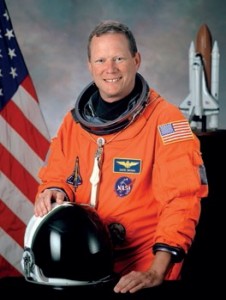 David McDowell Brown, Mission Specialist
David McDowell Brown, Mission Specialist
An athletic man, David was a four year collegiate varsity gymnast and circus acrobat, unicyclist, and stilt walker, before graduating with a degree in biology and achieving his doctorate in medicine. He joined the Navy as a flight surgeon. In 1988 he became the first flight surgeon in a decade to be selected for pilot training. David began astronaut training in 1996. STS-107 was his first and only mission. Before taking off, he told his girlfriend what to do if something went wrong: “I want you to find that person that made the mistake, and I want you to tell that person that I hold no animosity. I died doing what I loved.”
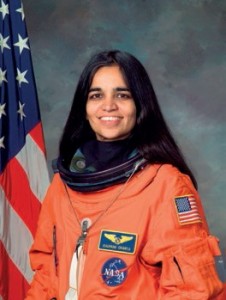 Kalpana “KC” Chawla, Mission Specialist
Kalpana “KC” Chawla, Mission Specialist
Born in Karnal, India, KC moved to the United States after undergraduate school, proceeding to obtain her doctorate in aeronautical engineering. She began her career at NASA Ames, researching computational fluid dynamics relating to aircraft air flows. She was selected as an astronaut candidate in 1995. Her first flight took place in 1996 aboard Columbia STS-87 as mission specialist and prime robotic arm operator. KC loved flying and was a licensed pilot and flight instructor of commercial land and sea planes and gliders. She was an inspiration to young girls in her birth country, where her achievements were much celebrated as the first Indian-born woman to fly in space.
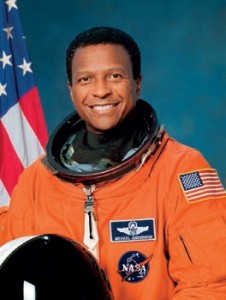 Michael P. Anderson, Payload Commander
Michael P. Anderson, Payload Commander
A physicist, Michael began his career as an Air Force Communication Electronics Officer. He rose to Director of Information System Maintenance before taking up pilot training and becoming an aircraft commander and instructor pilot. He was selected as an astronaut candidate in 1994. His first mission was STS-89, the eighth Shuttle-Mir docking mission. His second and final flight was aboard STS-107. Before his flight, Michael’s minister asked him what would happen if the shuttle were to not make it back. “Don’t worry about me,” he responded, “I’m just going higher.”
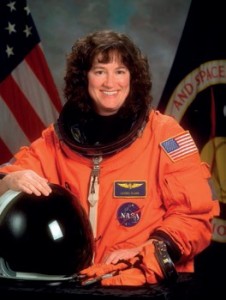 Laurel Blair Salton Clark, Mission Specialist
Laurel Blair Salton Clark, Mission Specialist
Laurel achieved an undergraduate degree in zoology before earning her doctorate of medicine. She joined the Navy as a submarine and diving medical officer, eventually becoming a Naval Flight Surgeon before serving with the Marines as Group Flight Surgeon. She became an astronaut candidate in 1996; STS-107 was her first spaceflight mission. The launch of Columbia took place just six weeks after Laurel’s whole family survived a crash that destroyed their family plane. Laurel was never one to sidestep a challenge, as her husband related after her death: “One of Laurel’s favorite quotes was: “A ship in harbor is safe — but that is not what ships are for.”
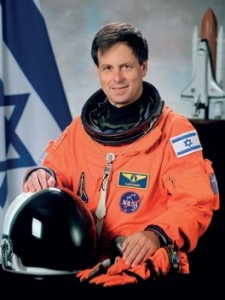 Ilan Ramon, Payload Specialist
Ilan Ramon, Payload Specialist
An Israeli-born citizen and son of Holocaust survivors, Ilan became a career fighter pilot in the Israeli Air Force, where he was known as the youngest pilot to participate in Operation Opera, the mission that destroyed the Iraqi nuclear reactor Osiraq. Ilan was selected as the first Israeli astronaut and began training with NASA in 1998. STS-107 was his only spaceflight. His diary was recovered from the wreckage of Columbia; on the last legible page of the journal, he wrote “I have become a man who lives and works in space.”
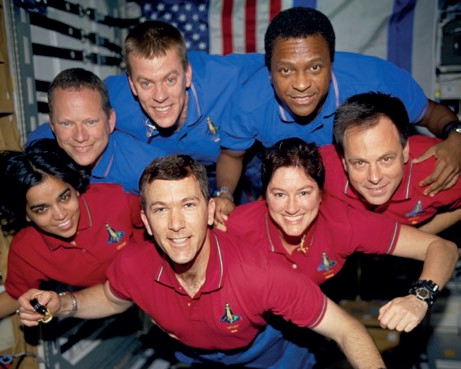
This photograph was taken aboard Columbia during STS-107; it was developed after the crew’s death from film recovered in the wreckage. From top left:
David M. Brown, William C. McCool, and Michael P. Anderson. From bottom left: Kalpana Chawla, Rick D. Husband, Laurel B. Clark, and Ilan Ramon (Credits: NASA).








![A trajectory analysis that used a computational fluid dynamics approach to determine the likely position and velocity histories of the foam (Credits: NASA Ref [1] p61).](https://www.spacesafetymagazine.com/wp-content/uploads/2014/05/fluid-dynamics-trajectory-analysis-50x50.jpg)












Leave a Reply